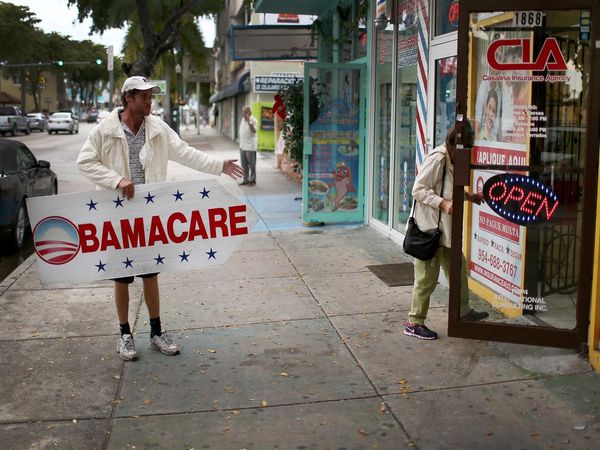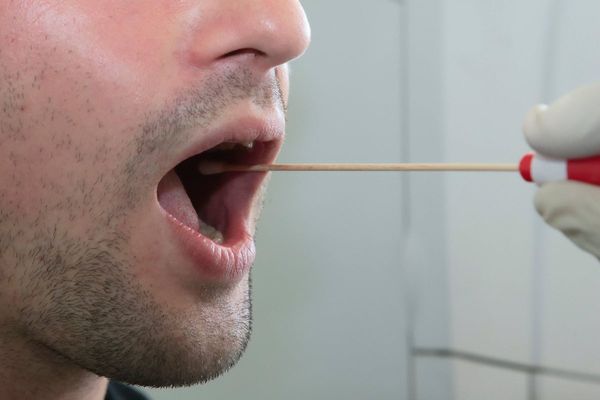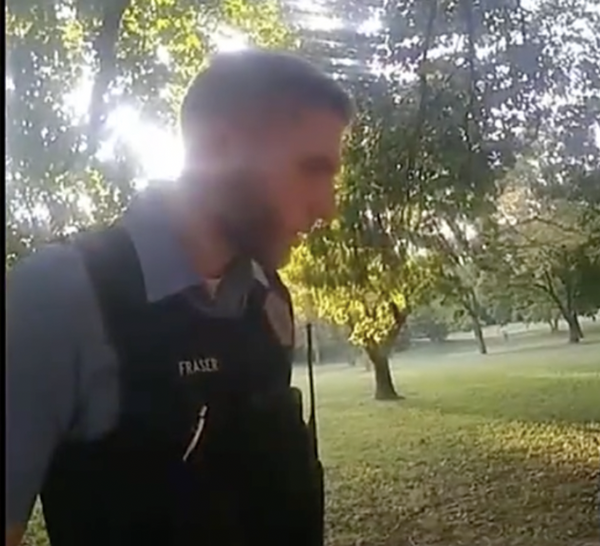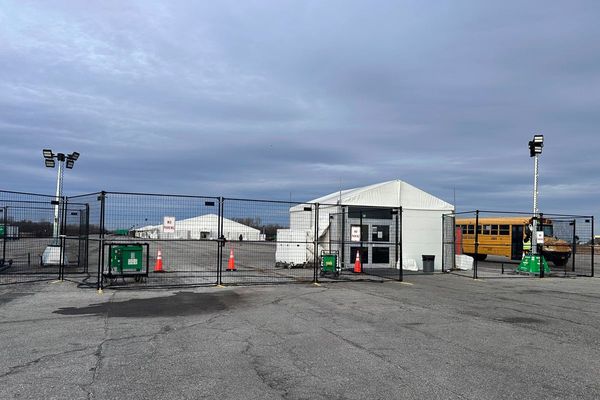
If the medium is the message, the White House’s message to Pope Francis couldn’t be clearer. When U.S. Secretary of State Mike Pompeo wrote an opinion piece last month in the magazine First Things, urging the Vatican not to renew its agreement with China on the appointment of bishops, the choice of outlet didn’t go unnoticed in Rome: In past years First Things, a religious publication close to the Catholic right, has grown increasingly favorable to the Trump administration and hostile toward the Holy See, declaring, among other things, Francis’s popedom “a failing papacy.”
The venue itself “already says something about the intention of those who wrote this article,” the Vatican’s secretary of state, Cardinal Pietro Parolin, told reporters. “It was a declaration of which side Pompeo was on,” Massimo Faggioli, a church historian at Villanova University who recently wrote the book The Liminal Papacy of Pope Francis, told me. Pompeo, an Evangelical Presbyterian, also met with Italy’s prime minister and foreign minister late last month to discuss China—according to the Italian press he warned them against Beijing’s involvement in 5G networks.
In this context, Faggioli points out, Pompeo’s intrusion into Chinese-Vatican relations had more to do with U.S. electoral politics than with China: “He was telling the Catholic and the evangelical right that he’s on their side and doesn’t care about clashing with the pope.” The Holy See has no official diplomatic relations with China and, far from being a comprehensive deal, the 2018 provisional agreement between the two that is on track to be renewed this month is strictly specific to the ordination of bishops in mainland China, which is not a top priority for U.S. President Donald Trump. The Catholic vote in the United States is, however.
The leadership of the Catholic Church in the United States, which leans politically conservative, is at odds with the direction that the pope is giving to the church, especially when it comes to issues such as protecting the environment, safeguarding migrants’ human rights, and fighting the death penalty—causes that are dear to Francis but hardly align with Republican politics.
Many U.S. bishops, Faggioli noted, see such conservative causes as the fight against abortion and the advocacy of traditional gender roles as “the only keys to the church’s survival,” while Francis has refused to focus his advocacy on just these issues. He has expressed progressive views on social, economic, and environmental issues, while firmly defending the church’s stance against abortion and against the notion that gender is a social construct, although he has slightly softened its rhetoric on homosexuality.
The culture war between Francis and the pro-Trump Catholic right has been dragging on for years, but it has accelerated in the past week, when the Vatican responded to Pompeo’s provocations with all its diplomatic—and theological—might.
When the U.S. secretary of state visited Rome last Wednesday, the pontiff refused to meet him. Parolin, the Vatican’s top diplomat, met with Pompeo instead; the usually well informed La Stampa described the meeting as “icy” and said the two agreed to disagree. Officially, the pope’s refusal was due to a policy of not meeting officials from countries that are in the middle of an electoral campaign in order not to give the impression of taking sides.
But Parolin told reporters that the Holy See was “surprised” by the White House’s public meddling with its foreign policy and took time to stress that Pompeo had requested a meeting with Francis in vain. Another high-ranking Vatican official, the British bishop Paul Gallagher, publicly accused the Trump administration of attempting to “weaponize the pope” for electoral gains.
On Saturday, Francis released his new encyclical, Fratelli Tutti (“All Brothers”), focusing on brotherly love, which criticizes pretty just about everything the Trump administration stands for—from the distrust of immigrants to unregulated capitalism. The encyclical, Francis’s third, after Laudato Si’ (2015) and Lumen Fidei (2013), was of course in the works for a long time, and its publication was scheduled to coincide with the feast day of St. Francis of Assisi, who served as an inspiration. But the timing contributed to amplifying its message that is not-so-subtly critical of Trump and, by extension, his Catholic supporters.
“Ancient conflicts thought long buried are breaking out anew, while instances of a myopic, extremist, resentful and aggressive nationalism are on the rise,” wrote the pope, in a lengthy attack on resurgent nationalism. “In some countries, a concept of popular and national unity influenced by various ideologies is creating new forms of selfishness.”
In certain passages, it’s hard to miss the references to U.S. politics. “Certain populist political regimes, as well as certain liberal economic approaches, maintain that an influx of migrants is to be prevented at all costs,” reads the encyclical. “It is born of a certain insecurity and fear of the other that leads to rejection and the desire to erect walls for self-defence.”
The United States is home to around 51 million Catholic adults, evenly split between Democrats and Republicans, according to the Pew Research Center. It’s worth noting, though, that divisions often run along ethnic lines, with Hispanic Catholics leaning left and white Catholics leaning right, per Pew data.
Faggioli said that in the past decade the most traditional and white segment of the U.S. Catholic Church have converged politically with white evangelicals, fully embracing the nationalist, “America first” agenda, which previously was perceived as incompatible with Catholic universalist doctrine, even in conservative circles.
Among the most prominent pro-Trump Catholics, there are former House Speaker Newt Gingrich, whose wife, Callista Gingrich, was nominated by Trump as U.S. ambassador to the Holy See, and former White House advisor (and culture warlord) Steve Bannon, who attempted to establish a right-wing political school in a former monastery outside Rome, to no avail.
The same group also has a negative opinion of Francis, whom they see as the logical consequence of the Second Vatican Council, which in the 1960s sought to modernize the church, to the dismay of hard-line conservatives. Just like white evangelicals, traditionalist Catholics see Trump as a bastion against postmodern cultural relativism.
But this doesn’t automatically translate to mass support for the Republican Party. Although still in the lead among this demographic group, Trump is actually losing some of his support among white Catholics: In the past election, 64 percent voted for him, while in the upcoming one about 59 percent plan to do so, according to the most recent Pew poll. If Democratic candidate Joe Biden were elected, that would make him the second Catholic president in U.S. history, after John F. Kennedy.
Pompeo’s attack seems specious both because relations with China are not a top priority for U.S. Catholics and because the renewed agreement between the Holy See and China is unlikely to alter the balance between Washington and Beijing, which the Trump administration sees as its main competitor.
However, the agreement is not above criticism.
Although the details are secret, the Vatican has made it clear that it is provisional and concerns solely the appointment of bishops in mainland China. It “has reestablished full communion with Chinese bishops ordained without papal mandate,” reads a statement by the Vatican’s news agency.
Since 1957, Chinese authorities have refused to let the pontiff pick his own bishops, taking it upon themselves to ordain bishops without papal approval, which is strictly incompatible with Catholic doctrine. Since its establishment, the People’s Republic of China has maintained the party line that religious activities in its territory should be limited and under the direct authority of the Communist Party, which is officially atheist. Catholicism in particular was viewed with suspicion in the early days, because it was associated with Western influence, but in the past few years Beijing has focused its efforts on containing Islam, which is perceived as a threat to Chinese cultural homogeneity.
Over the decades, this situation has led to the coexistence of two Catholic Churches in China, one official church sanctioned by the government but not recognized by the Vatican, and an underground church loyal to Rome. After decades of negotiations, the Vatican reached a provisional agreement in 2018, in which it retroactively recognized the bishops ordained by Chinese authorities and obtained the right to ordain new one while giving Beijing a say in the picks.
The agreement, which was set to expire last month but was temporarily renewed, has put an end to the division in the Chinese Catholic community and will allow for Chinese bishops to participate to synods and other events in Rome, something they were previously barred from because they were not formally recognized by the Vatican.
But it also comes at a time in which China is cracking down on religious freedoms, including that of its some 10 million Catholics, a tiny fraction of the country’s population, not to mention Beijing’s human rights violations against Muslims.
According to several reports by the Pontifical Institute for Foreign Missions’ news agency, Chinese authorities have severely limited the practice of Catholic religion—including a prohibition on minors attending services and a ban on religious education in some provinces—and harassed priests who refuse to join the state-controlled church. Some Chinese Catholics, speaking on the condition of anonymity for fear of repercussions, have urged the pope not to renew the agreement because it’s not benefiting the community.
But, when it comes to China, the Holy See is negotiating from a weak position. Francis has almost no leverage to pressure Beijing on the treatment of Catholics, let alone broader human rights.
As an economic superpower with a small, embattled Catholic population, China isn’t eager to make significant concessions to the Vatican. By contrast, the Holy See, which under Francis has vocally promoted human rights and hasn’t shied away from criticizing Western leaders, has a history of maintaining a low political profile in nations where its followers are in an underprivileged position.
While conservative Catholics in the United States, emboldened by their alliance with the Trump administration and its white evangelical fan base, are eager to wage an all-out culture war, Rome’s priorities couldn’t be more different. By snubbing Pompeo, the pope made that clear.







